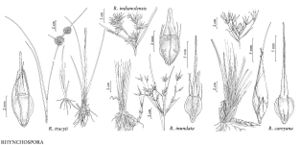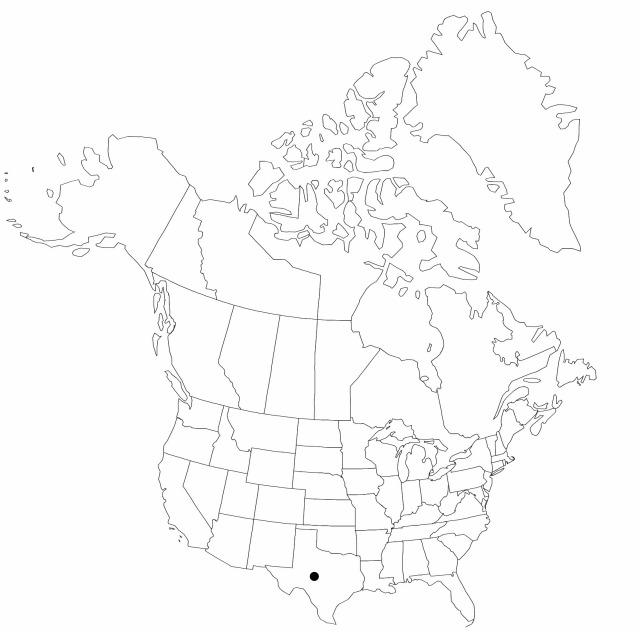Difference between revisions of "Rhynchospora indianolensis"
Fl. S.E. U.S., 193, 1327. 1903.
imported>Volume Importer |
imported>Volume Importer |
||
| Line 53: | Line 53: | ||
|publication year=1903 | |publication year=1903 | ||
|special status=Illustrated;Endemic | |special status=Illustrated;Endemic | ||
| − | |source xml=https:// | + | |source xml=https://bitbucket.org/aafc-mbb/fna-data-curation/src/2e0870ddd59836b60bcf96646a41e87ea5a5943a/coarse_grained_fna_xml/V23/V23_356.xml |
|genus=Rhynchospora | |genus=Rhynchospora | ||
|species=Rhynchospora indianolensis | |species=Rhynchospora indianolensis | ||
Latest revision as of 20:40, 5 November 2020
Plants perennial, cespitose, to 100 cm; rhizomes absent. Culms stiffly erect or ascending, leafy-based, triangular, multiribbed. Leaves ascending or erect, crowded toward culm base, shorter, more widely spaced distally, longest overtopping or equaling subtended inflorescences; principal blades flat, trigonous distally, 4–6 mm wide, apex attenuate, trigonous. Inflorescences terminal and axillary, compounds of fascicles, nearly umbellate; clusters hemispheric to nearly capitate, 1.5–2 cm wide; 1 cluster nearly sessile, others on slender rays to 7 cm, sometimes penultimate node with single cluster on peduncle 7–12 cm. Spikelets light redbrown, lanceoloid, 6–7 mm, apex acute; fertile scales lance-ovate, 5 mm, apex acute to blunt, midrib shortexcurrent or not. Flowers: perianth bristles 6, overtopping tubercle base, antrorsely barbellate. Fruits 1 per spikelet, (5.5–)6–7 mm; body obovoid, 3–4 × 2–2.5 mm, margins thick, crimped, surfaces level or concave, minutely pebbled; tubercle narrowly conic, 2grooved, 3–4 mm, base blunt, stout, capping fruit apex, tip barely exserted.
Phenology: Fruiting early summer–fall.
Habitat: Silty shallows of pools, prairie swales, ditches
Elevation: 0–100 m
Discussion
Rhynchospora indianolensis was considered by G. Kükenthal to be closely related to, if not the same as, the Cuban R. scutellata Grisebach but with fruit of different dimensions and sculpture. W. W. Thomas (1984) believed the two to be conspecific.
Selected References
None.

